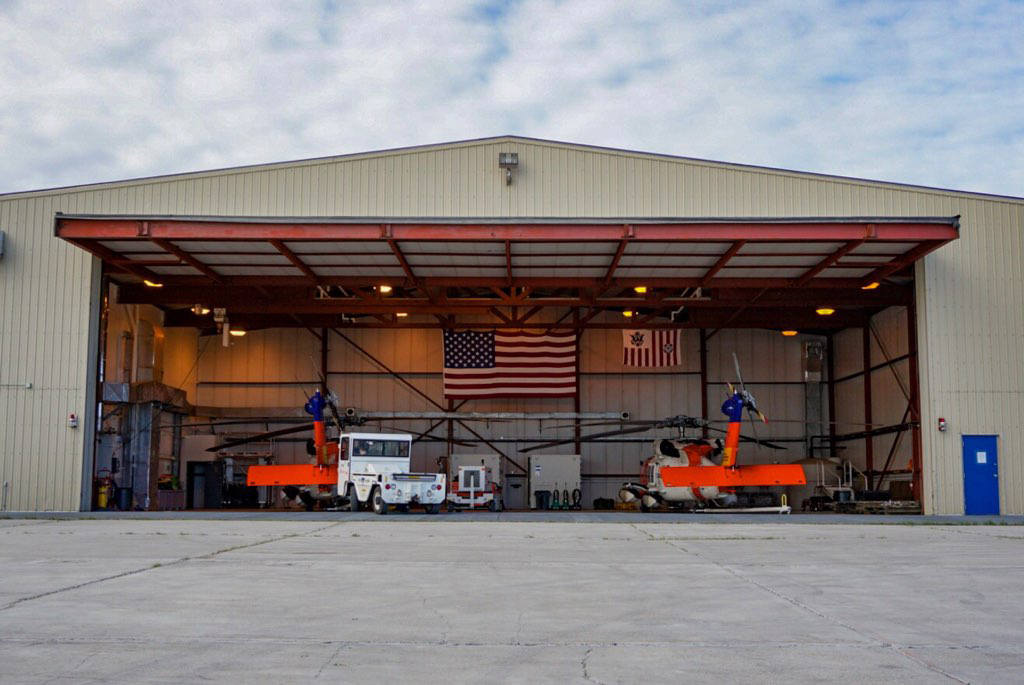US Coast Guard settles into Kotzebue for the summer
The Arctic Shield program is designed to amplify the U.S. Coast Guard's presence in the Arctic.

The U.S. Coast Guard has set up a temporary base of operations for the 2018 summer season at Kotzebue, on Alaska’s Northwest Arctic coast, as part of a program to boost safety and knowledge in the Arctic.
Alaska National Guard facilities in Kotzebue have become the summer home for two MH-60 Jawhawk helicopters and their crews during Operation Arctic Shield 2018, the Coast Guard said. The helicopters and crew members, normally based in Kodiak, were moved north and the forward operating center was officially opened on July 1, the Coast Guard said.
Also dedicated to this year’s Arctic Shield program are several Coast Guard cutters — the icebreaker Healy, used for scientific research, and two other cutters that will be traveling north from Unalaska/Dutch Harbor, the Coast Guard said.
The Arctic Shield program, which puts Coast Guard personnel, aircraft and ships in Alaska’s Arctic during the open-water season, began in 2009. The seasonal work typically runs from the start of July until mid- to late fall. The goals are enhanced “domain awareness” — understanding of the territory — improvements in vessel safety, protection of the environment and engagement with local communities.
In past years, the Coast Guard rotated sites for its seasonal base of Arctic Shield operations. But now Kotzebue, which was also used in 2016 and 2017, has emerged as a preferred site, thanks in part to the availability of hangar space and other support from the existing National Guard facilities there. Kotzebue, just north of the Bering Strait, is also strategically located for Coast Guard missions, officials said.
“The Forward Operating Location in Kotzebue helps mitigate several of the major challenges when operating in the Arctic including the environment, vast distances and limited infrastructure,” Rear Adm. Matthew Bell, commander of Coast Guard 17th District, said in a statement. “Arctic Shield 2018 operations and activities will include performing multiple missions, leveraging partnerships and increasing maritime domain awareness to reduce risk and promote safe, secure and environmentally responsible maritime activity.”
This year’s Arctic Shield includes continuation of a special program, “Operation Arctic Guardian,” that is focused on oil spill prevention and response. Last year, the Coast Guard, the Alaska Department of Environmental Conservation and organizations conducted a seminar in Utqiagvik that reviewed procedures, practiced spill-response techniques and took inventory of available response equipment. This year, the spill prevention and response program will be staged in Bethel and will focus on spill-response tactics and planning in smaller geographic areas, the Coast Guard said.
Last year, during Arctic Shield 2017, the Coast Guard conducted 28 search-and-rescue missions, visited dozens of remote villages to spread messages about safe boating practices and completed what was the first Northwest Passage transit by a non-icebreaking cutter since 1967. The program, which ran until late fall, also included safety inspections of more than 50 gold-dredging vessels based in Nome, as well as inspections of other vessels.
In one notable accomplishment during Arctic Shield 2017, Coast Guard and U.S. Navy divers conducted the first Arctic ice dives from the Healy since 2006. That year, two Coast Guard members died in Arctic dives conducted in waters hundreds of miles north of Utqiagvik. The tragedy spurred an investigation and various punitive steps taken against Healy officers — and reforms and improvements in safety measures that led the way to the resumption of Arctic ice dives last year.
Yereth Rosen is a 2018 Alicia Patterson Foundation fellow.